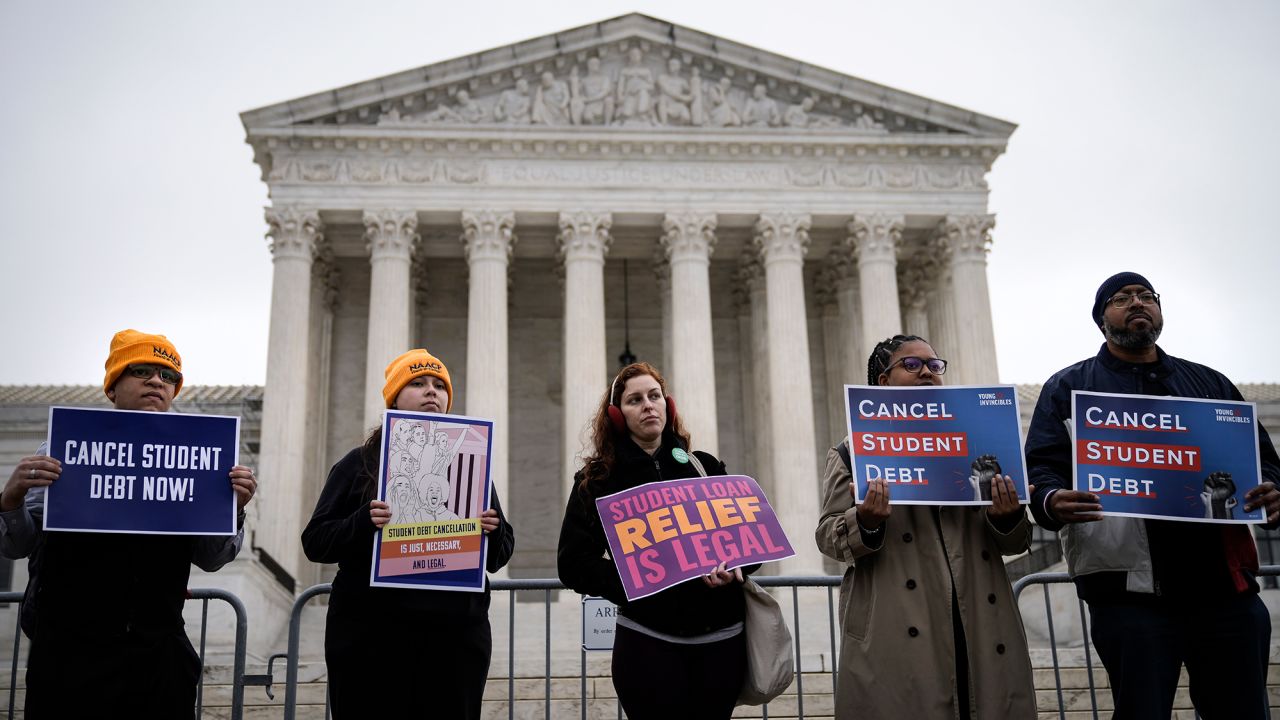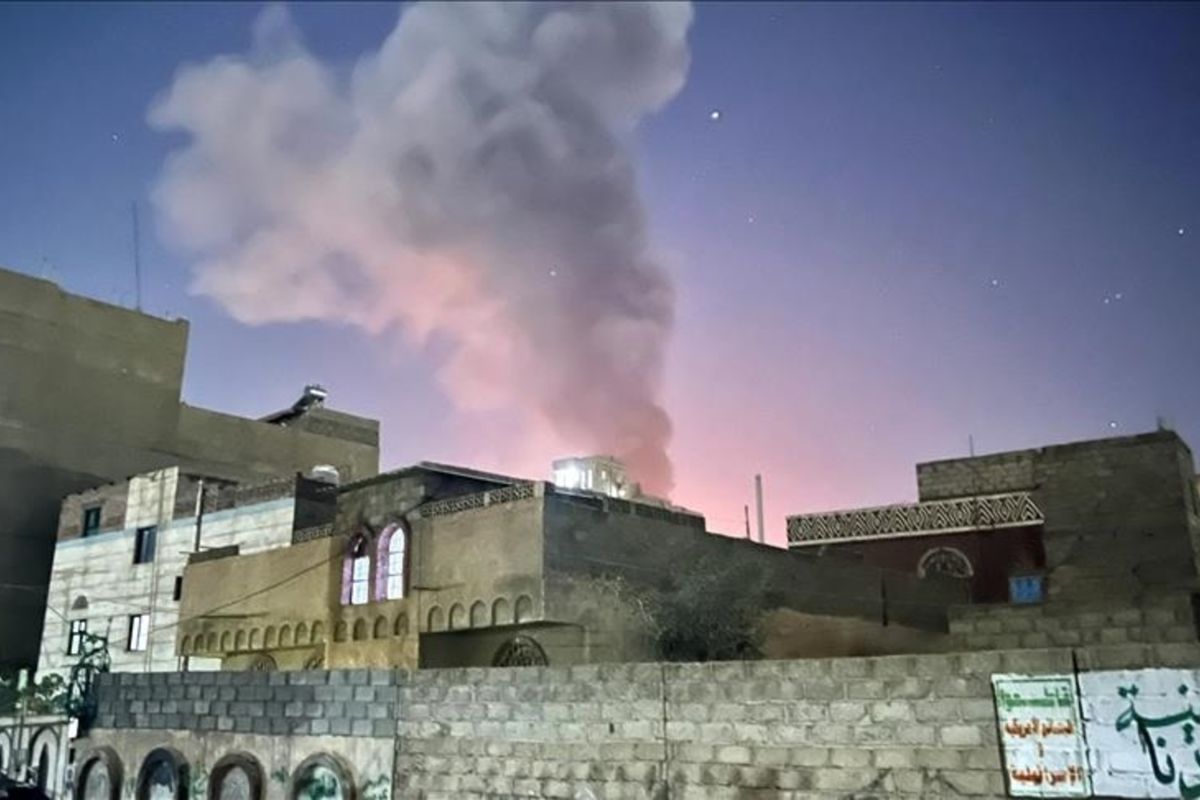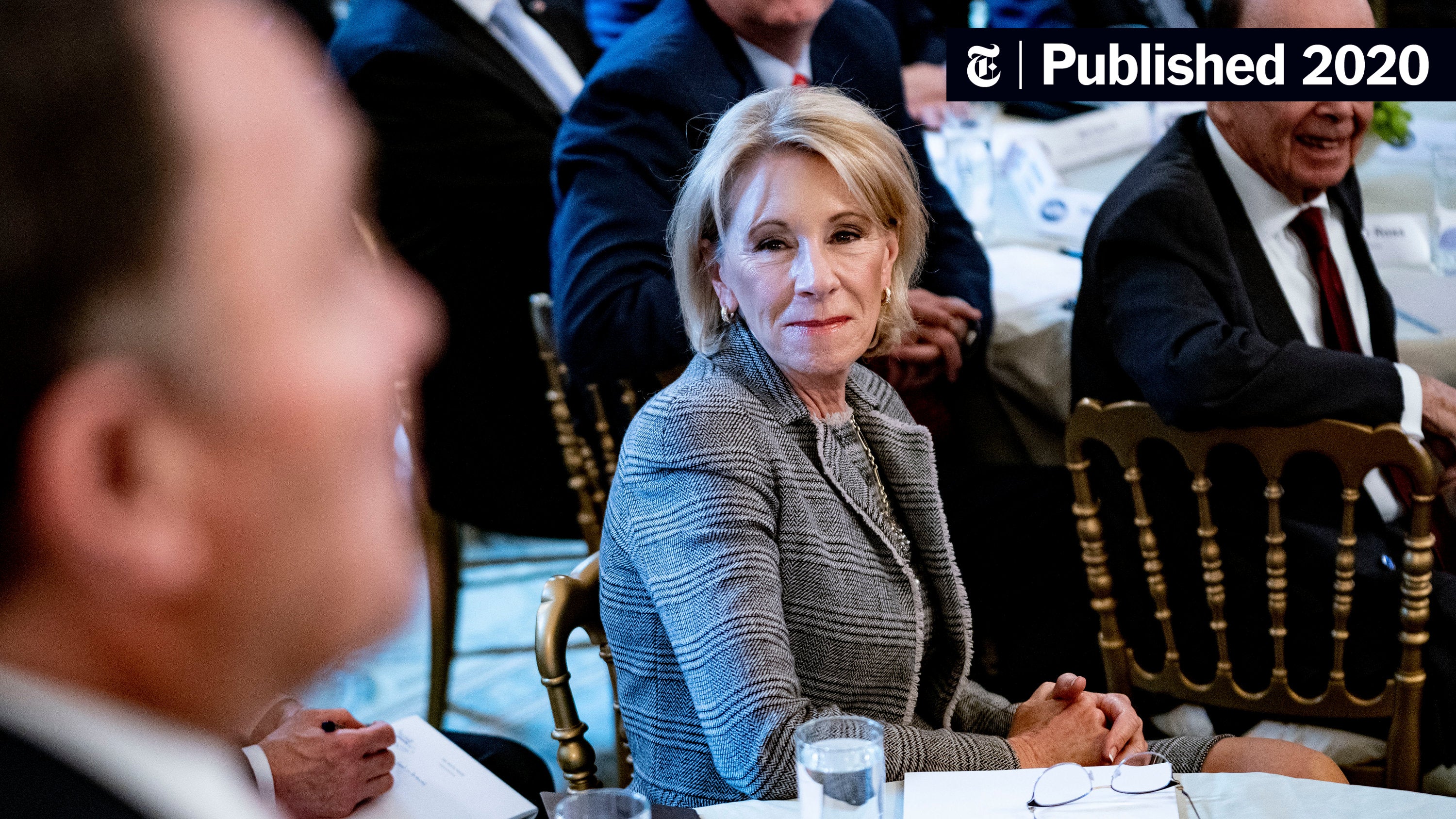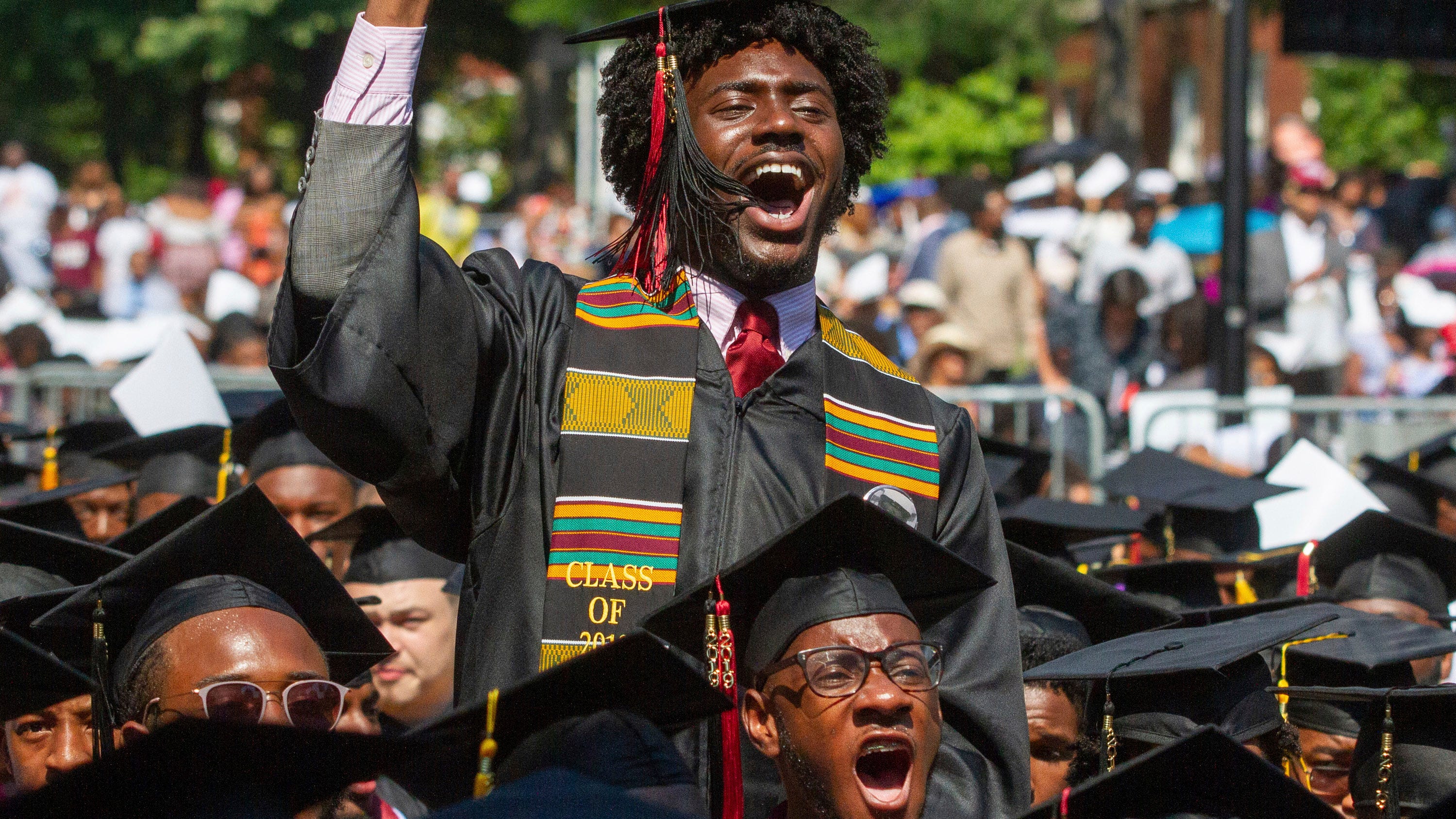Student Loan Forgiveness Under Trump: A Black Perspective

Table of Contents
Limited Expansion of Existing Programs
The Trump administration's approach to existing student loan forgiveness programs, such as Income-Driven Repayment (IDR) plans, was characterized by incremental changes rather than sweeping reforms. While the administration focused on streamlining the application process through technological updates and minor bureaucratic adjustments, significant improvements in access and affordability were lacking.
- Minimal changes to eligibility criteria: The thresholds for income-driven repayment plans remained largely unchanged, meaning many Black borrowers who were already struggling to meet the stringent requirements continued to face significant challenges.
- Lack of significant funding increases for existing programs: Without increased funding, the capacity of existing programs to effectively assist a larger number of borrowers, particularly those from marginalized communities, remained limited.
- Focus on streamlining the application process: Initiatives like online portals and simplified forms aimed to improve efficiency, but often lacked the resources and outreach necessary to effectively reach those most in need.
- Limited outreach to minority communities: The administration’s efforts to raise awareness about existing programs and the revised application process fell short in reaching and effectively supporting Black communities.
These limited expansions, coupled with existing systemic inequalities in access to higher education and financial literacy within the Black community, resulted in minimal relief for many Black borrowers already struggling under the weight of student loan debt. The pre-existing challenges of navigating complex financial systems and a lack of readily available resources compounded the impact of these insufficient policy adjustments.
Focus on Workforce Development and Alternative Programs
In lieu of significant expansion of existing forgiveness programs, the Trump administration emphasized workforce development and alternative pathways to education as a strategy to mitigate student debt.
- Emphasis on vocational training and apprenticeships: The administration promoted vocational training and apprenticeships as viable alternatives to traditional four-year college degrees, emphasizing the potential for debt-free or low-debt career paths.
- Promotion of debt-free education models: While initiatives promoting debt-free education gained traction, their accessibility and overall impact on reducing student debt, particularly for Black students, remained limited.
- Impact on reducing overall student debt: While these programs aimed to reduce overall student debt, their effectiveness in reaching and benefiting Black students was debatable due to a lack of targeted support and resources.
- Accessibility of these alternatives for Black students: Access to vocational training and apprenticeships, along with awareness of these alternatives, was unevenly distributed, potentially exacerbating existing inequalities.
The success of these initiatives in addressing the specific needs and challenges faced by Black students pursuing vocational skills remains questionable. While vocational training can be a valuable path, systemic inequities in access to quality training and employment opportunities within the Black community meant that these programs did not necessarily provide a complete solution.
The Role of Historically Black Colleges and Universities (HBCUs)
The Trump administration's approach to Historically Black Colleges and Universities (HBCUs) significantly impacted the student loan debt landscape for Black borrowers. While specific initiatives may have been undertaken, their overall effectiveness in alleviating the student loan burden for HBCU students requires deeper analysis.
- Funding levels for HBCUs: Changes in funding levels for HBCUs directly impacted the institution's ability to provide financial aid and support to students.
- Initiatives aimed at supporting HBCU students: Specific initiatives, if any, targeting HBCU students' financial well-being need to be identified and assessed for their impact.
- Impact of these policies on HBCU student debt: The overall effect on HBCU student debt requires careful examination considering the critical role HBCUs play in providing higher education access for Black students.
HBCU students face unique challenges, including disproportionately high rates of student loan debt and limited access to resources compared to their peers at predominantly white institutions (PWIs). A comprehensive evaluation of the Trump administration's policies on HBCUs is vital to understanding their impact on HBCU student debt and the broader Black community.
Disparities in Loan Forgiveness Outcomes
Data on loan forgiveness under the Trump administration reveals significant disparities in outcomes between Black and white borrowers.
- Statistics on loan forgiveness rates: Available data on loan forgiveness rates needs to be analyzed to illuminate the racial gap in success rates.
- Reasons for disparities (e.g., wealth gap, access to resources, higher interest rates): Several factors contribute to this disparity, including pre-existing wealth gaps, unequal access to financial resources, and potentially higher interest rates faced by borrowers from marginalized communities.
- The role of systemic racism in exacerbating these disparities: The persistent racial inequities in the student loan system are exacerbated by systemic racism, leading to unequal access to educational opportunities, financial resources, and ultimately, loan forgiveness.
The persistent racial inequities highlighted in loan forgiveness data underscore the urgent need for comprehensive policy reforms to address systemic issues impacting Black borrowers.
The Impact of the COVID-19 Pandemic and Subsequent Relief Measures
The COVID-19 pandemic significantly disrupted student loan repayment, requiring governmental intervention. The Trump administration's response, while providing some temporary relief, was not without its limitations.
- Temporary suspensions of student loan payments: The temporary suspension of student loan payments offered a reprieve, but it was a short-term solution that didn't address the underlying issues of debt accumulation and access to loan forgiveness.
- Impact of the pandemic on Black borrowers: The pandemic disproportionately impacted Black borrowers, already facing systemic disadvantages in financial stability and access to resources.
- Limitations of the pandemic relief measures: The relief measures fell short in addressing long-term financial insecurities and systemic inequities embedded within the student loan system.
The pandemic exacerbated existing inequalities within the student loan system. The Trump administration's response, while providing some temporary relief, failed to adequately address the long-term systemic challenges contributing to the disproportionate burden of student loan debt on the Black community.
Conclusion
The Trump administration's approach to student loan forgiveness, while intending to address student debt, yielded mixed results, particularly concerning the Black community. While some efforts were made to streamline processes and explore alternative education pathways, significant systemic inequalities remained unaddressed. The lack of substantial expansion of existing programs and limited outreach to minority communities resulted in minimal relief for many Black borrowers. The disparities in loan forgiveness outcomes, exacerbated by pre-existing systemic racism, underscore the need for a more comprehensive and equitable approach. Further research, policy analysis, and community engagement are crucial to creating truly equitable solutions. The need for continued advocacy and policy reforms to address the persistent issue of student loan forgiveness, specifically concerning the Black community, remains critical. Let's continue the conversation about effective student loan forgiveness strategies that specifically benefit Black borrowers.

Featured Posts
-
 Alex Fine Supports Pregnant Wife Cassie At Mob Land Premiere
May 17, 2025
Alex Fine Supports Pregnant Wife Cassie At Mob Land Premiere
May 17, 2025 -
 Houthi Yaman Ancaman Rudal Baru Sasar Dubai Dan Abu Dhabi
May 17, 2025
Houthi Yaman Ancaman Rudal Baru Sasar Dubai Dan Abu Dhabi
May 17, 2025 -
 The Implications Of A Privatized Student Loan System Under Trump
May 17, 2025
The Implications Of A Privatized Student Loan System Under Trump
May 17, 2025 -
 Black Community Response To Trumps Student Loan Executive Order
May 17, 2025
Black Community Response To Trumps Student Loan Executive Order
May 17, 2025 -
 Jackbit Bitcoin Casino Review Your Guide To Crypto Gambling In 2025
May 17, 2025
Jackbit Bitcoin Casino Review Your Guide To Crypto Gambling In 2025
May 17, 2025
